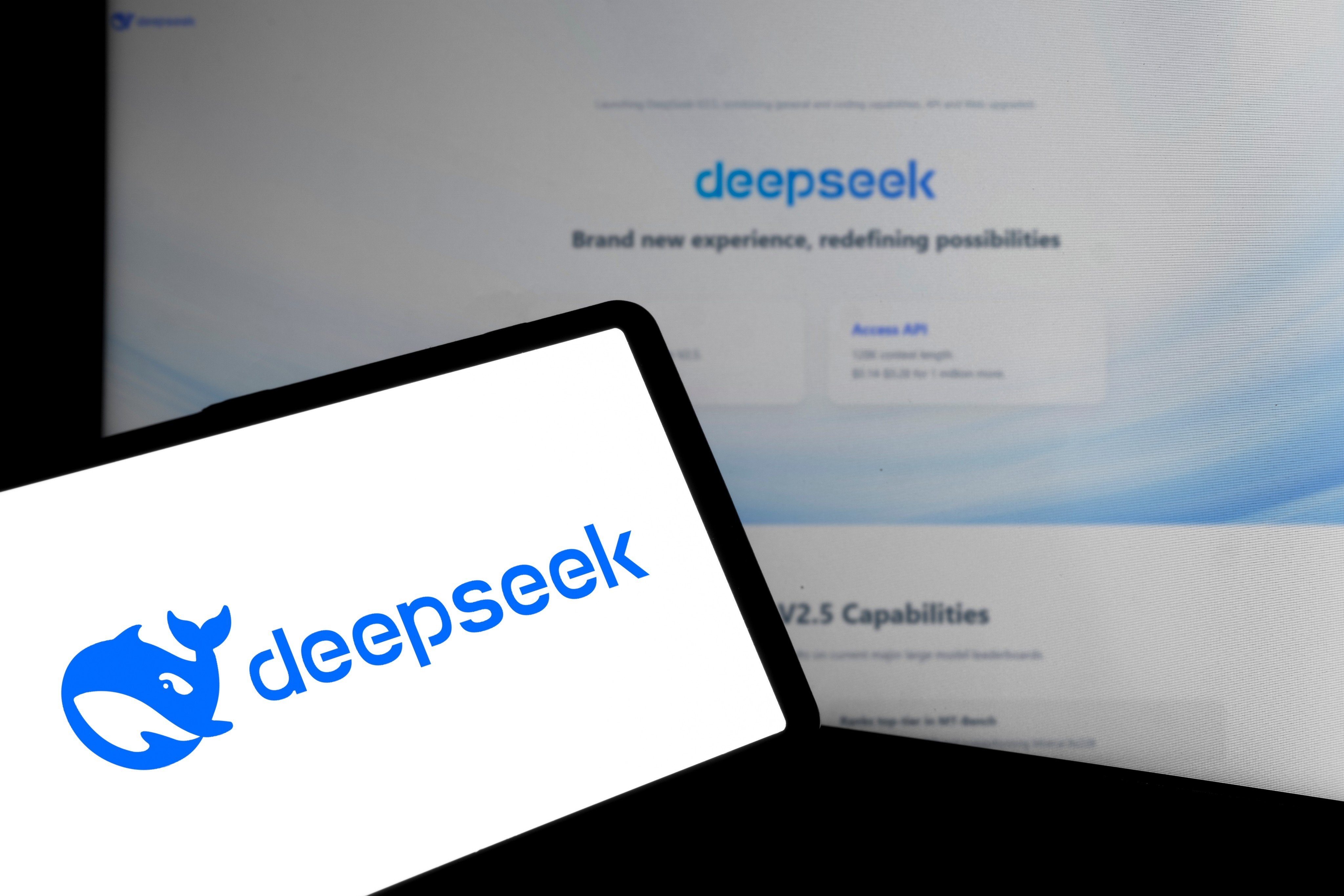
Agriturismoanticomuro
Add a review FollowOverview
-
Founded Date August 23, 2009
-
Sectors Accounting
-
Posted Jobs 0
-
Viewed 61
Company Description
China’s AI Company Trump Declares serves as a ‘Alarm Bell’ To Silicon Valley
DeepSeek states its most recent AI design is as great as those of its American rivals, was less expensive to construct and it’s readily available totally free. What does that mean for US AI supremacy?
A Chinese business called DeepSeek, which just recently open-sourced a large language model it declares performs in addition to OpenAI’s most capable AI systems, is now the white hot focal point for the AI neighborhood. Its tech is being admired as one of the very best open-source oppositions to top American AI models, stiring anxieties about China’s formidability in the magnifying international AI race and spurring U.S. start-ups to re-examine their own work after a foreign competing relatively did so far more with so fewer resources.
In late December, the small Chinese lab, based in Hangzhou, launched V3, a language design with 671 billion parameters, which was reportedly trained in 2 months for simply $5.58 million. That’s a cost orders of magnitude less than OpenAI’s GPT-4, a bigger model at an approximated 1.8 trillion specifications, however constructed with a $100 million price. Last week, DeepSeek tossed down another onslaught, releasing a model called R-1, which it declares rivals OpenAI’s o1 design on what’s called “thinking jobs,” like coding and solving complex math and science problems. OpenAI charges users $200 each month for such models; DeepSeek offers its own for totally free.
The power of DeepSeek’s model and its prices are already shifting the method American AI start-ups run their services. It’s an inexpensive, engaging alternative to offerings from incumbents like OpenAI, Jesse Zhang, CEO of Decagon, which constructs AI agents for customer care, informed Forbes. brand-new design will likely force American AI giants like OpenAI and Anthropic to reevaluate their own prices.

Eiso Kant, CTO and co-founder of Poolside AI, a unicorn that develops AI for software engineering, informed Forbes that DeepSeek’s strength is in its engineering capability to do more with less.
“What DeepSeek is revealing the world is that when you put a strong focus on making your training compute-efficient, you can do a lot,” he stated. “There’s amazing things that you can continue to eject of these Nvidia chips to make them exceptionally more efficient.”
“It’s kind of wild that someone can go in and invest numerous countless dollars for a closed source model. And then all of a sudden you get an open-source one that’s simply out there totally free.”

With OpenAI’s o1 design apparently bested on particular standards, some start-ups have currently begun acquiring information to train more innovative systems, Manu Sharma, CEO of information labeling company Labelbox informed Forbes. “I think the AGI race is kind of reset in many methods,” he said. “We are going to just see a lot more competitiveness throughout the board.”
Alexandr Wang, the billionaire CEO of training data leviathan Scale AI, recently called the model “earth shattering.” And Aravind Srinivas, CEO of $9 billion-valued AI search start-up Perplexity has said that he plans to integrate the model into the primary search product. AI chip business Groq has currently added DeepSeek’s R1 model to its language processing systems. (In June, Forbes sent Perplexity a cease and desist after implicating the start-up of utilizing its reporting without authorization.)

Others are less pleased. Writer CEO May Habib informed Forbes she’s not surprised that DeepSeek’s models, trained on a considerably smaller sized spending plan, are able to match the most intelligent models in the US. In October, Writer launched a design that was trained with just $700,000, when it cost $4.6 million for OpenAI to build a model with comparable abilities. The business used synthetic data to lower its training costs.
“Even before DeepSeek’s model exploded on the scene, we have actually been saying that these models are commoditizing. They’re getting more and more dispersed,” Habib said.
Over the weekend, as buzz about the business grew, DeepSeek exceeded ChatGPT on Apple’s app shop, ranking No. 1 for totally free app downloads in the United States. Then, on Monday, a number of U.S. tech stocks nosedived as panic around DeepSeek’s successful model launch spread. By day’s end, AI chip leviathan Nvidia’s market cap had been shaved down nearly $600 billion.
It was a shocking upending of the AI world order. “It’s kind of wild that someone can go in and spend hundreds of millions of dollars for a closed source model,” Greg Kamradt, president of ARC Prize, a not-for-profit that criteria AI designs, told Forbes. “And then suddenly you get an open-source one that’s just out there for complimentary.”
For weeks DeepSeek’s models have been admired by a few of the most popular names in the AI world including Meta’s chief AI scientist Yann LeCun, OpenAI cofounder Andrej Karpathy and Nvidia’s senior research study researcher Jim Fan. But news of the business’s latest accomplishment has sent America’s AI heavyweights scrambling to determine just how the Chinese business is getting such outstanding results while investing a lot less money.
“Deepseek R1 is AI’s Sputnik moment,” investor-billionaire Marc Andreessen composed on X.

“The release of DeepSeek, AI from a Chinese company, need to be a wakeup require our markets that we require to be laser-focused on contending to win.”
Despite the pomp and bombast of the Trump administration’s current AI announcements, DeepSeek has heightened worries that the U.S. could be losing its AI edge – particularly due to the fact that it’s been so effective regardless of the tight US export manages that avoid it from utilizing Nvidia’s state of the art AI chips. The business’s most current accomplishment is a sobering counterpoint to Project Stargate, a joint venture between OpenAI, Oracle and Japanese tech conglomerate Softbank, to invest $500 billion in AI infrastructure.
Ahead of a meeting with House Republicans in Florida on Monday, Trump acknowledged the risk. “The release of DeepSeek, AI from a Chinese company, need to be a wakeup require our industries that we require to be laser-focused on contending to win,” he said.

There are caveats to DeepSeek’s most current accomplishment. Researchers have found its AI designs tend to self-censor on subjects that are sensitive to the Chinese Communist Party (CCP). Security researcher Jane Manchun Wong told Forbes DeepSeek’s designs do not respond to questions about Chinese President Xi Jinping and the 1989 Tiananmen Square demonstrations. Beyond this, there are privacy issues. Data got in into DeepSeek’s models is stored in servers located in China, according to its policies.
Divyansh Kaushik, a vice president at national security advisory firm Beacon Global Strategies warned Forbes against individuals using DeepSeek without comprehensive vetting. “Unless we can have clear nationwide security and totally free speech examinations of Chinese models, they must be treated like propaganda arms of the CCP,” he said. “They need to be dealt with as Huawei on steroids.”
The issue is DeepSeek’s value proposal: a cutting-edge AI thinking model that’s totally free to utilize and open in the closed, fee-based AI world being developed by companies like OpenAI and Anthropic. “It’s much better to have a Chinese design that is open source versus an American design that is closed source,” stated Labelbox’s Sharma.

